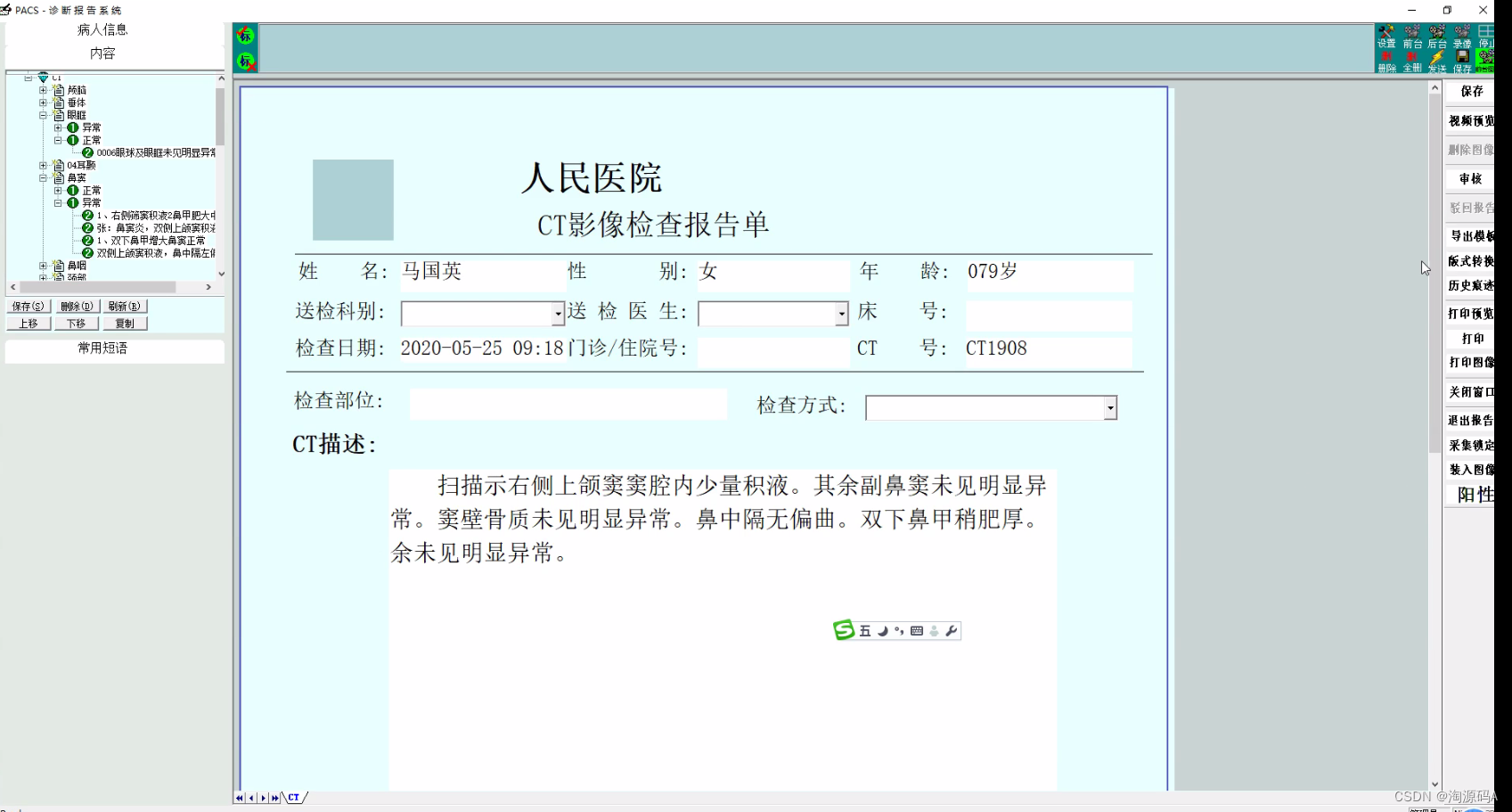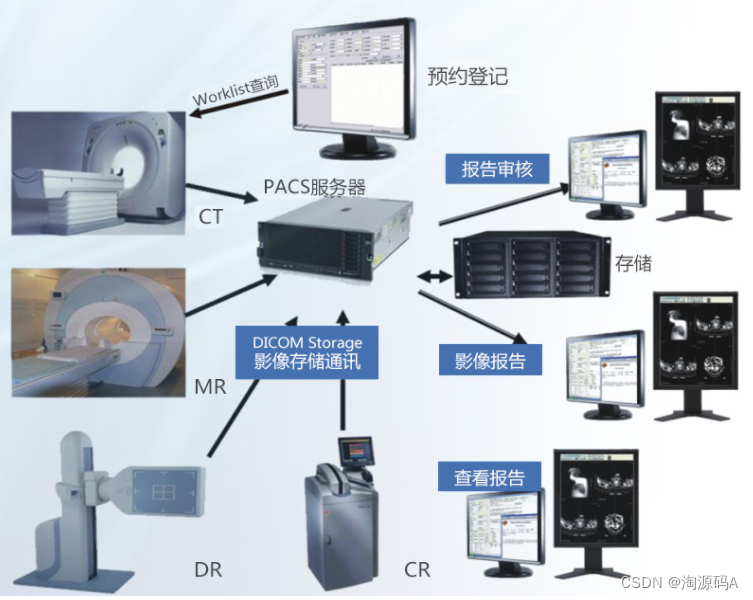PACS system source code
The PACS system is based on the latest IT technology, following the IHE/DICOM3.0 and HL7 standards of the medical and health industry, and is a multi-functional server and film reading system developed. Through the simple and high-performance image reading function, it supports image diagnosis business during busy hours, has functions such as in-hospital Web transmission and offline image storage, and also has multiple NAS functions for backup and capacity expansion.

System functions
Fully complying with the DICOM protocol, the hospital-level PACS system is used in imaging departments such as radiology, ultrasound, endoscopy, and pathology.
Integrated radiology management RIS system.
Support a variety of image processing and 3D reconstruction functions.
WYSIWYG graphic report editing and printing.
Perfect reporting traces, historical records, and multi-level review mechanism.
Complete comprehensive statistical analysis, including workload, fees, positive rate, academic statistics, etc.

It can process images, system applications and data services separately, can be expanded at will and is mutually fault-tolerant, automatic load balancing, supports multiple operating system platforms and databases, fully considers the hospital's choice of system architecture, and ensures data security and reliability from the overall perspective The architecture can be divided into data storage system, information transmission system and user terminal system.
1. Data storage system
The data storage system centrally stores and manages all the data in the PACS system, which is the core of the whole system. It is mainly composed of the PACS database and the mass storage unit of image data. In order to facilitate the connection with the HIS system, the HIS database is generally in the same network.
The PACS database can use MS SQL Server, ORACL, Sybase, DB2 and other relational databases to store patient examination data, clinical diagnosis information, system user rights, daily management, image file storage index and other data to improve the operating efficiency of the system. The image data storage unit is composed of storage devices such as disk array cabinets and optical disk cabinets with redundant functions. According to the frequency of data access in different periods, it can be divided into online, near-line, and offline storage devices.
◆Online storage
Online storage devices require fast access speed, large throughput, and storage capacity that can meet the data storage requirements of the hospital for 1 to 3 to 5 years. Generally, high-performance and large-capacity optical fiber storage array cabinets are used to connect to the host computer with optical fibers. The data generated by imaging equipment It is stored in the device first, which is convenient for quick access of the terminal. The daily diagnosis of the system mainly accesses the online storage device
◆Nearline storage
Near-line devices require large storage capacity and average speed, can store data for about 5 to 10 years, and can provide faster access speeds. Generally, slower storage devices such as SATA hard disks are used. When the image storage on the online storage device exceeds a certain period of time and the access rate is very low, the system automatically transfers the image data to the nearline device to release the storage space of the online device. After the image data is transferred to the nearline device, it does not affect Terminal access to image data.
◆Offline storage
Offline storage generally stores data that is rarely accessed. The administrator archives and backs up the data on the nearline storage device and then converts it to offline storage data. Offline storage uses storage media such as tapes or CDs for archiving. After archiving, the space of near-line storage devices will be released. Offline data cannot be directly accessed by the user terminal system, and the data must be reloaded from the offline storage medium into online or offline data. This process generally requires human intervention to complete, and it can also be automatically loaded by using optical disc library, tape library and other equipment data.
The system supports the function of automatically migrating the data in the online storage device to the near-line storage device according to the set storage policy, which reduces the cost of the storage system and ensures the operating efficiency of the system.
2. User terminal system
The user terminal system is the user interface for managers, medical staff, and nursing staff to use this system. The user terminal can have different forms and communicate with the middleware platform of the application server through a standard interface. It mainly includes diagnostic terminals, multi-screen consultation terminals, remote consultation terminals, query terminals, system management terminals, data backup and archiving terminals, non-DICOM standard equipment access terminals, etc.
3. System security planning
The security planning of the PACS system is mainly implemented by adopting an independent network structure and a software system that supports secure connections. The security of the system mainly includes network security, communication transmission security and data access security.
3.1 Basic Network Security
The PACS system completely adopts a hard three-tier architecture. Through the middle layer technology, the data storage system and the user terminal system run on an independent physical network to realize the physical isolation of the network. Realize data exchange between networks.
4. Composition of functional modules
The main functional modules of the system include database business processing, middleware service program, registration appointment terminal, multi-screen diagnosis terminal, video digital workstation, remote diagnosis terminal, system management application module, image archiving management module and database management module, etc.